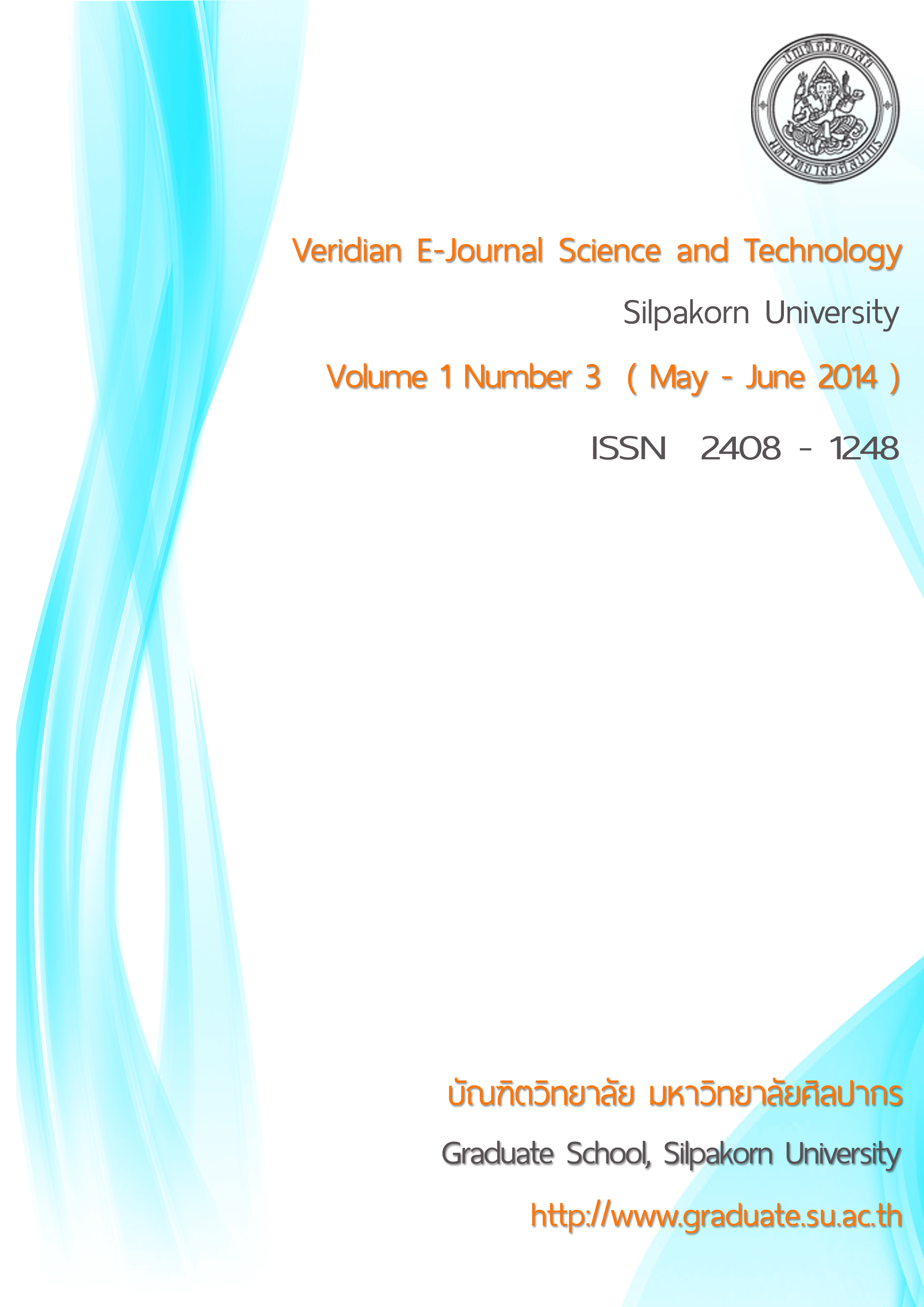การวิเคราะห์หาปริมาณไนไตรท์และไนเตรทในเขม่าปืนที่ติดบนผ้า โดยเทคนิค Ion chromatography
Main Article Content
Abstract
บทคัดย่อ
ตัวอย่างเขม่าปืนที่เก็บได้บนเสื้อผ้าของผู้ยิงปืนมาวิเคราะห์ เพื่อหาปริมาณไนไตรท์และไนเตรท โดยใช้เทคนิค Ion Chromatography (IC) ตัวอย่างผ้าที่ถูกนำมาใช้ในการวิเคราะห์หาเขม่าปืนคือ ผ้าฝ้าย ผ้ายีนส์ และผ้าใยสังเคราะห์ โดยนำผ้าชนิดต่างๆมาติดไว้บริเวณหน้าอกและแขนเสื้อทั้งสองข้างของผู้ยิงปืน โดยทำการทดลองยิงปืนในห้องปิด โดยใช้อาวุธปืนกึ่งอัตโนมัติ ขนาด 9 ม.ม. ลูเกอร์ ยี่ห้อ Glock และลูกกระสุนปืนแบบทองแดงหุ้มตะกั่ว ยี่ห้อ Royal 9 ม.ม. ลูเกอร์ ในการทำการทดลองแต่ละครั้งจะยิงปืน 3 นัดต่อเนื่องกันและเก็บตัวอย่าง เพื่อศึกษาการคงอยู่ของเขม่าปืนบนผ้าที่เก็บตัวอย่างทันที 6, 12 และ24 ชั่วโมงภายหลังจากการยิงปืน ผลการทดลองพบว่าในทุกๆตัวอย่างตรวจพบปริมาณของไนไตรท์และไนเตรทภายหลังจากการยิงปืน 24 ชั่วโมง โดยปริมาณของไอออนทังสองที่เก็บได้จากบริเวณปลายแขนทั้งสองข้างมีปริมาณมากกว่าที่เก็บได้จากบริเวณหน้าอกของเสื้อที่ใส่ นอกจากนั้นพบว่าปริมาณไนไตรท์ในเขม่าปืนที่เก็บได้บนผ้ายีนส์มีปริมาณมากกว่าที่เก็บได้จากบนผ้าชนิดอื่นๆ จากการศึกษาแสดงให้เห็นประสิทธิ์ภาพของการนำเทคนิค IC มาใช้ในการตรวจหาเขม่าปืนบนผ้าและผลการทดลองยังสามารถใช้ประโยชน์ในการสืบสวนสอบสวนทางนิติวิทยาศาสตร์ เพื่อระบุผู้ที่กระทำความผิดได้
Abstract
Gunshot residues (GSR) sampled form the shirt on the gun firer were analysed for the amounts of nitrites (NO2- ) and nitrate (NO3- ) by the technique of ion chromatography (IC). Different types fabric namely, cotton, denim and polyester were selected for the study of GSR deposition. The cloths were attached to the chest area and the sleeves of the gun firer. The gun firing were carried out in a closed room with a Glock semiautomatic and Luger 9 mm cartridges. For each experiment, the gun was fired three times successively and the GSR samples of the shirt. In the GSR persistence study, samples were taken immediately and at 6, 12 and 24 hours after firing. The amounts of nitrites and nitrates can be measured in all samples even in the samples collected at 24 hours after firing. The amounts of both ion in the samples collected from the sleeves were higher than in those taken from the chest area of the shirt. Moreover, it was found that the denim collected more GRS than other fabrics as indicated by the amounts of nitrites in the samples. This study demonstrated the potential of the IC technique for the detection of GSR on cloths and the results may assist the forensic investigation of firearm usage.
